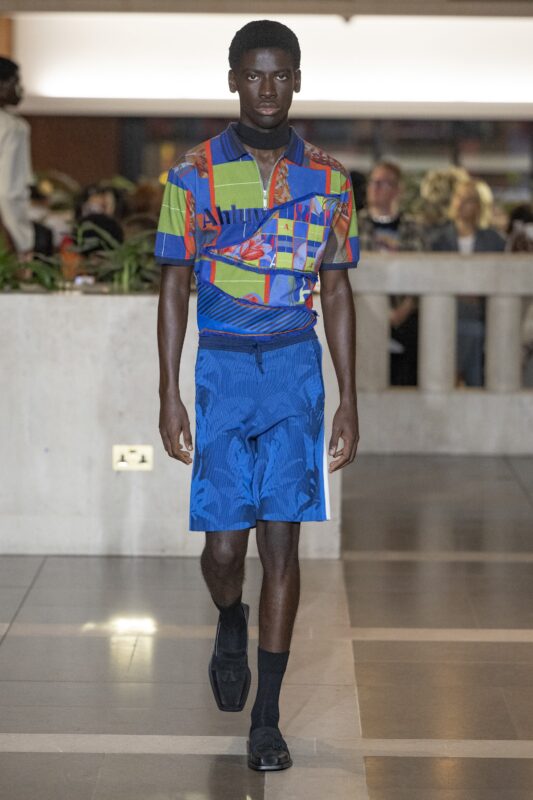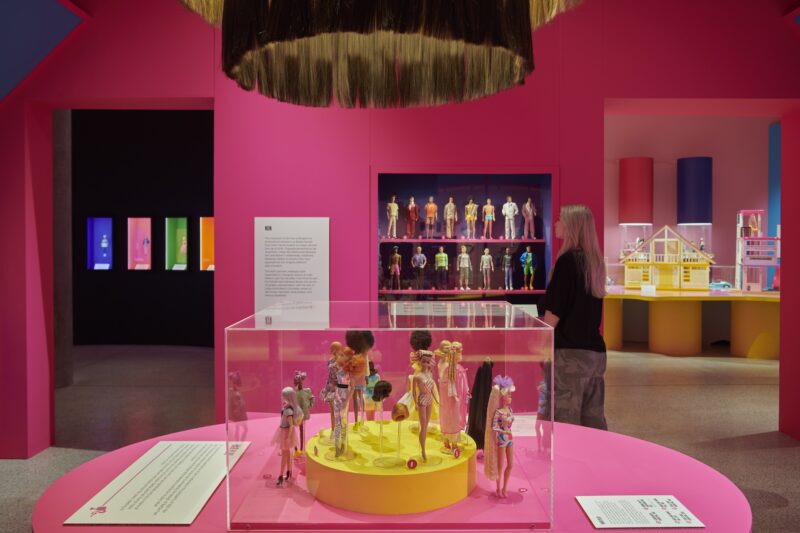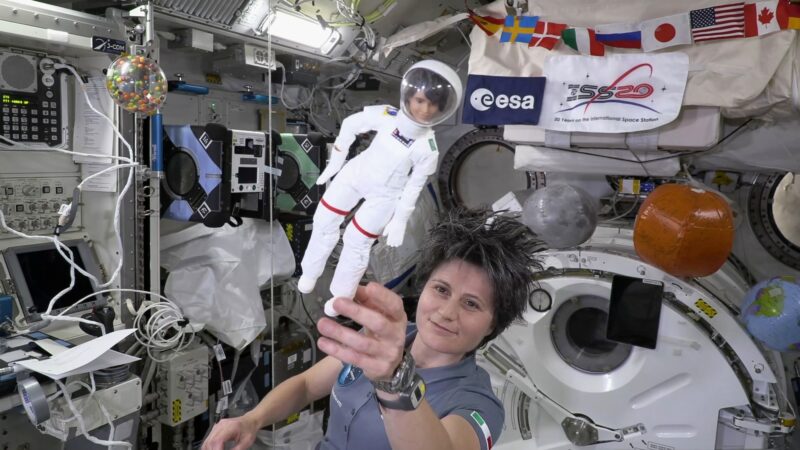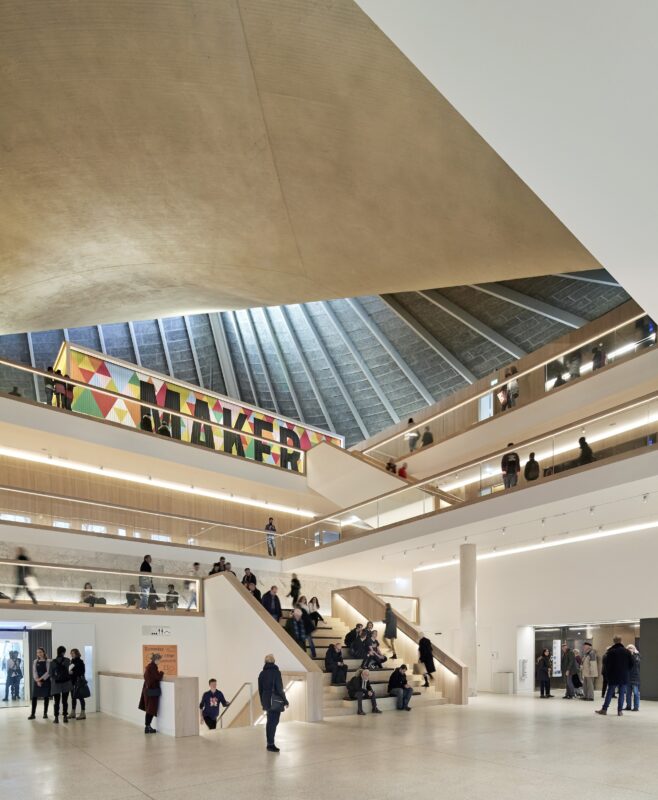The Design Museum has opened a new display space for design research responding to environmental crises. It is the first display in a series curated by Future Observatory, the Design Museum’s national research programme for the green transition coordinated in partnership with the Arts and Humanities Research Council (AHRC), part of UK Research and Innovation (UKRI).
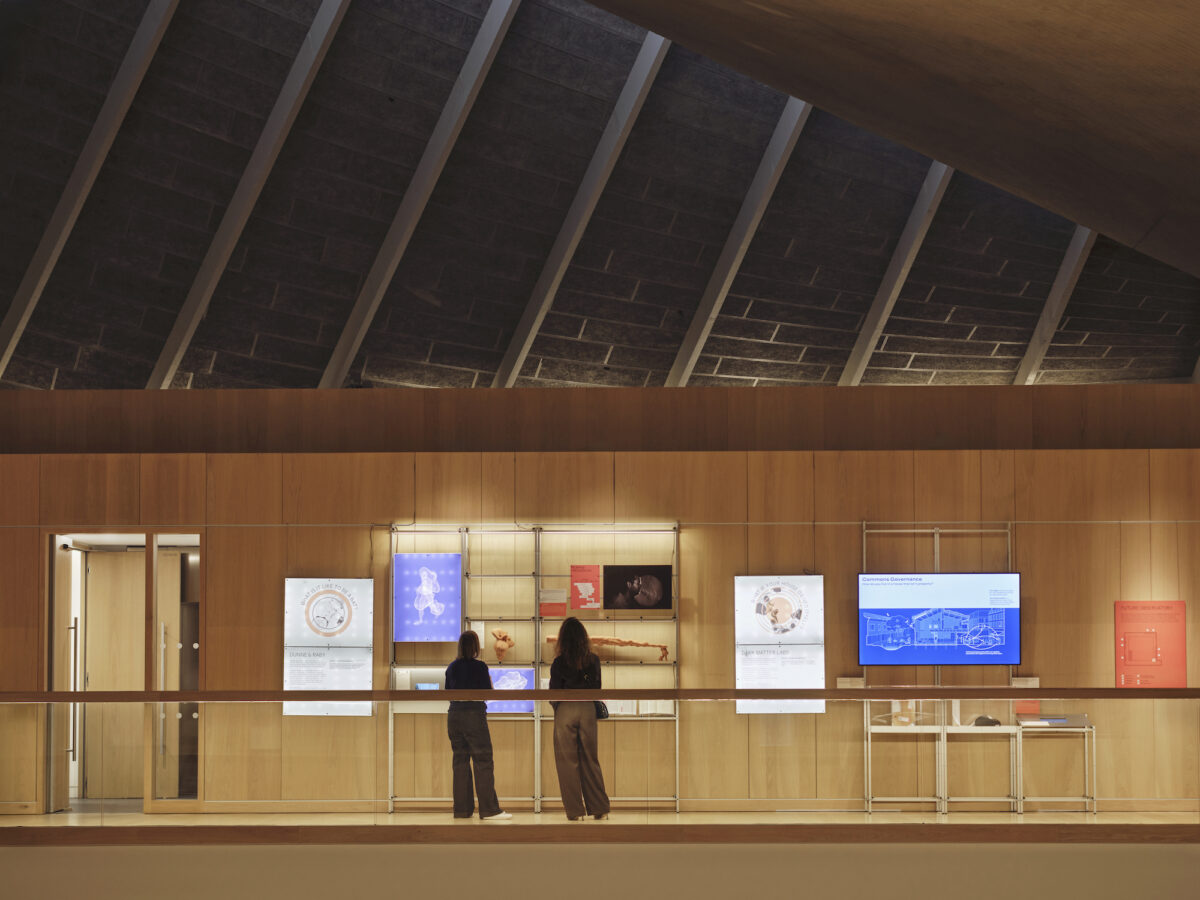
Located on the museum’s second-floor balcony, the Future Observatory display showcases innovative design research projects from across the UK. This is conceived as a permanent space to champion cutting-edge design research on environmental issues, introducing visitors to thought-provoking and innovative ways in which designers are responding to climate breakdown. The display signals the importance of placing design at the heart of the green transition, for both the museum and the broader design industry.
The display presents ongoing research, rather than design as a finished product or system. The first studios, labs and researchers to be exhibited are CLIMAVORE, Dark Matter Labs, Dunne & Raby, Faber Futures, Julia King and The Hub for Biotechnology in the Built Environment. You can learn about a diverse range of research from a variety of design disciplines, from experimental textile dying techniques to radical ideas about the future of building.
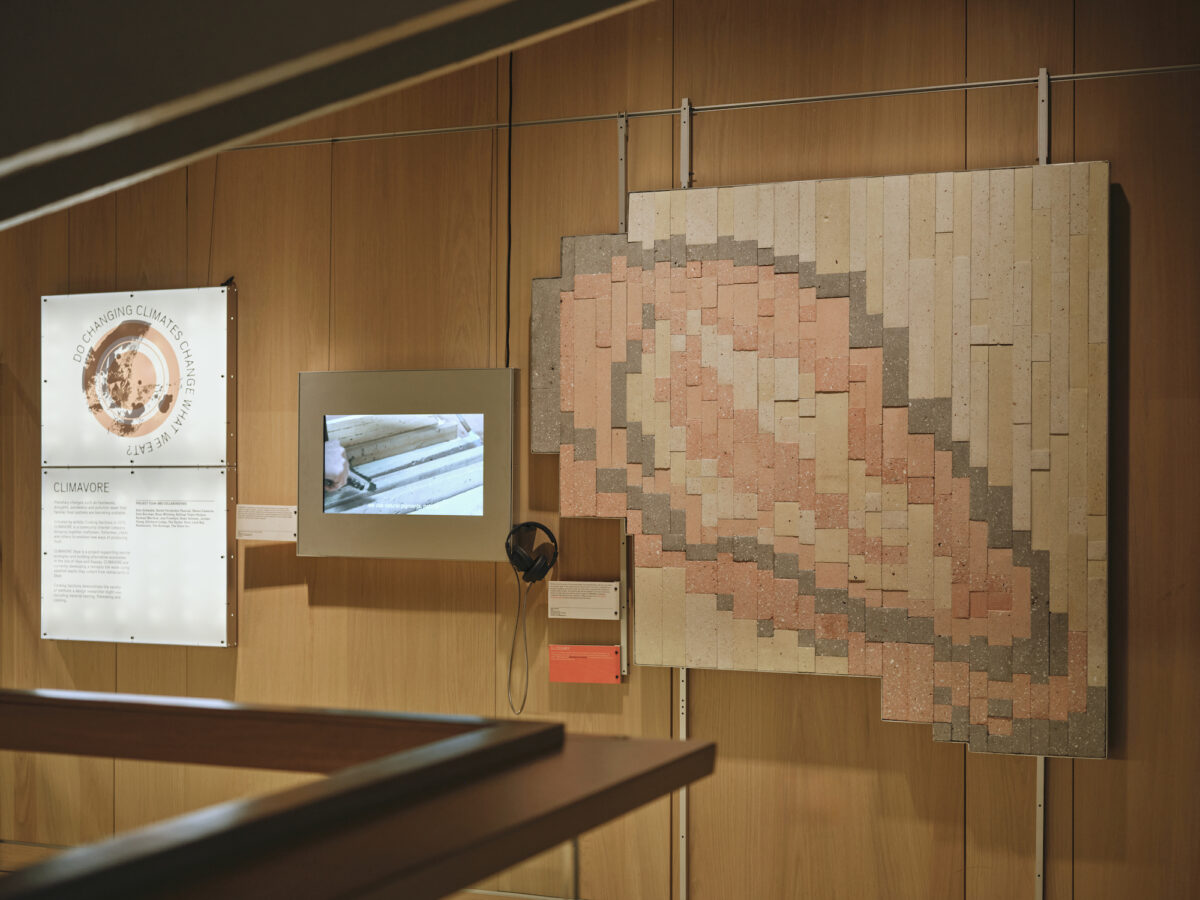
The display includes a mural from CLIMAVORE, made with seashells collected from restaurants in the Isle of Skye and reconstituted to form a durable material. Founded by artists Cooking Sections in 2015, CLIMAVORE researches how to adapt our food systems as the climate changes and seasons collapse. The mural showcases the potential of waste shells as a low-carbon building materialand to provide a source of employment in the island with an emerging community-led tile production industry.
Biodesign agency Faber Futures work with nature to explore ways of reducing the environmental impact of production techniques. As part of their practice, they have been working with Streptomyces coelicolor, a soil-dwelling bacterium that naturally secretes a pigment that can be used to dye textiles. For the Future Observatory display, they will show the Exploring Jacket: a silk garment that presents the remarkable results of this technique. Visitors will be able to learn about the process through a film that documents the jacket’s journey, from bacteria cell to fashion product.
The display also includes work by architect and design researcher Julia King, which explores design solutions that could mitigate the impact of water pollution on the north Kent coast. Dangerous amounts of sewage are being dumped into public waterways across the UK: in 2022, only 14% of rivers were of ‘good’ ecological status. Visitors will be able to learn about King’s research proposals through short films and illustrated maps, which explore solutions such as reintegrating oysters into Whitstable beaches as natural water filters.

Interested in the design of invisible systems that govern our everyday lives, Dark Matter Labs propose a new approach to housing and living with their FreeHouse project. The concept of the FreeHouse reimagines the home not simply as a piece of property, but as a generator of environmental and social value. They suggest, for example, a future in which construction materials are rented instead of purchased. Their section of the display includes artifacts that demonstrate this concept in action, such as a wooden block that features a scannable barcode — allowing visitors to track its journey and use in the construction of multiple buildings. Visitors will also see a printed receipt, which records the ecological impact of the FreeHouse: challenging traditional metrics of value associated with construction.

Dunne & Raby use design research to shift how we see and understand the world. For the Future Observatory display, they will present a speculative design project that explores how other creatures view the world and the impossibility of truly inhabiting their perspectives. Light, sound and smells are all perceived by different species in a variety of ways. Dunne & Raby’s 3D printed sculptures reimagine the human form as if smell and sound could be seen, abstracting its shape with a plume of atmospheric disturbance.
The Hub for Biotechnology in the Built Environment (HBBE) research and develop new low-carbon materials and construction techniques to radically rethink how we build. This research is presented with ‘BioKnit’: a knitted biohybrid structure composed of fungal mycelium, that has been specially designed using computer modelling to arch precisely across the balcony. BioKnit is made from mycelium, sawdust and 3D knitted wool: as the mycelium feeds on the sawdust, the structure hardens to form a strong, durable material. Visitors can observe the process of developing this material and building such structures through drawings and footage of the design lab’s work.
Justin McGuirk, Future Observatory’s Director, said:
“This display marks an important moment because it creates a dedicated space for both the environment and design research at the heart of the museum.”
George Kafka, Future Observatory Curator, said:
“Across the new Future Observatory display we see critical, experimental and ultimately hope-filled research being undertaken in the UK. The studios, labs and practices exhibited are amongst today’s leading thinkers in design fields from fashion to food, working at scales from the microbial to the systemic. Through this display, visitors will learn about the vital role of design research in working towards a liveable future.”
Forthcoming displays in the new display space will feature research funded by Future Observatory and the Arts and Humanities Research Council, as part of a £25 million nationwide programme to Design the Green Transition.
The Future Observatory display system is designed by OS-Studio within the OpenStructures system to have a low environmental impact and will be used in future displays. It uses modular elements, so that its parts can be used and recombined in different ways for a range of displays.
About Future Observatory:
Future Observatory is the Design Museum’s national research programme for the green transition coordinated in partnership with the Arts and Humanities Research Council (AHRC), which is part of UK Research and Innovation (UKRI).
Acting as both a coordinating hub for a nationwide programme, as well as a research department within the museum, Future Observatory curates exhibitions, programmes events and funds and publishes new research, all to champion new design thinking on environmental issues. futureobservatory.org


